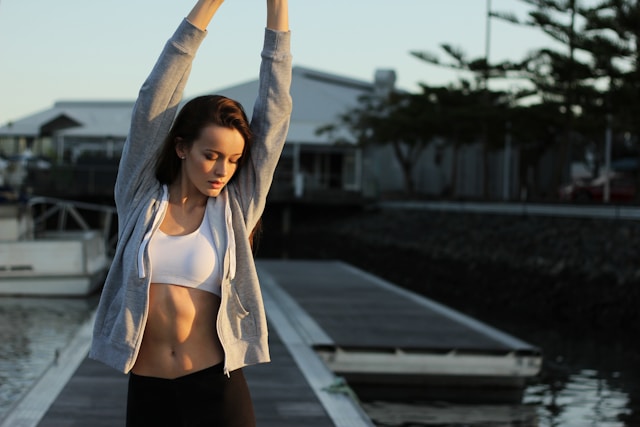Why exercise recovery is important and not just for athletes
The truth is exercise recovery is important for everyone, not just for athletes. Every workout, regardless of its intensity or duration induces stress on the body. When you engage in physical activity, especially strenuous or high-intensity workouts whether it is during a game, at a gym or, even during a virtual workout session, you subject your muscles, joints, and various physiological systems to stress and strain. Recovery is essential to allow your body to adapt and respond to this stress positively.
The difference for athletes is that the stakes are even higher because they depend on their bodies to perform at the highest level requiring peak physical condition. Any physical limitation can greatly alter their athletic potential. Proper rest and recovery is equally as important as their training to allow their body to heal, repair and come back stronger. Recovery for athletes is essential to avoiding injury, overtraining and enhancing performance.
Types of exercise recovery for athletes
Athletes employ various types of recovery strategies to optimize their performance, prevent injuries, and support overall well-being. These recovery methods aim to address different aspects of the body’s response to training and competition. Here are some common types of recovery for athletes:
Active Recovery involves engaging in low-intensity exercise or activities, such as light jogging, swimming, or cycling, to promote blood flow and aid in the removal of metabolic byproducts from the muscles. The benefit is that it facilitates recovery by promoting circulation without adding significant stress to the body.
Passive Recovery involves complete rest or minimal physical activity. This allows the body to recover by reducing the overall physical load and stress on muscles and joints.
Nutritional Recovery focuses on consuming the right nutrients, including carbohydrates, proteins, and fats, to replenish energy stores and support muscle repair. This aids in glycogen replenishment, muscle protein synthesis, and overall recovery. Consulting a nutrition coach for better results is recommended.
Hydration involves maintaining proper fluid balance by drinking enough water and electrolytes to support optimal physiological function, nutrient transport, and temperature regulation.
Quality sleep is critical for hormone regulation, muscle repair, and overall physical and mental recovery.

Stretching and Flexibility Training includes static, dynamic and assisted stretching to improve flexibility and reduce muscle tightness. This is critical for improving range of motion, reducing muscle stiffness, and helping prevent injuries.
Foam Rolling and Self-Myofascial Release involves using tools like foam rollers or massage sticks to apply pressure to muscles, release tension and promote blood flow. This helps alleviate muscle soreness, improve flexibility, and enhance recovery.
Cold Water Immersion (Cryotherapy) involves exposure to cold water or ice baths. This technique helps with resolving inflammation, minimizing muscle soreness, and accelerating recovery by constricting blood vessels and decreasing metabolic activity.
Compression Therapy involves wearing compression garments or using compression devices to apply pressure to limbs. This aids in reducing swelling, improving blood circulation, and minimizing muscle soreness.
Massage Therapy is a technique that involves hands-on manipulation of soft tissues by a massage therapist. It works by enhancing blood flow, reducing muscle tension, and promoting relaxation.
Heat Therapy involves the application of heat through methods like hot baths, saunas, or heat packs, which is designed to increase blood flow, promote muscle relaxation, and aid in recovery.
Mental Recovery using techniques such as mindfulness, meditation, and visualization to promote mental relaxation and reduce stress. This supports mental well-being, enhances focus, and helps manage performance-related stress.
Athletes often combine several of these post-work recovery strategies in their overall training and competition regimens. The effectiveness of each method can vary among individuals and sports, and it’s essential for athletes to tailor their recovery approaches based on their specific needs and preferences.
Choosing the best exercise recovery plan
There’s no one size fits all in choosing which recovery techniques to use. Deciding on the right recovery plan for you will depend on your available time, resources and needs. However, studies that compared these different recovery techniques found massage therapy to be the most effective for DOMS, inflammation, perceived fatigue and muscle damage. These findings indicate that massage therapy is the best choice for faster muscle recovery. Cold exposure such as water immersion and cryotherapy were found to be just as effective for inflammation. Compression garments were also found to have a significant positive impact on DOMS and perceived fatigue although not as pronounced.
Leading Edge sports massage for athlete recovery
Sports massage is a specialized form of massage therapy designed to enhance athletic performance, promote faster recovery, and prevent injuries. Here’s how our sports massage at Leading Edge addresses each of these 3 key areas:
- At Leading Edge our sports massage enhances athletic performance by manipulating soft tissues, including muscles, tendons, and ligaments, to address specific issues related to physical activity. Doing so allows athletes to maintain a higher training frequency without compromising performance or risking overtraining.
- This technique accelerates recovery from delayed onset muscle soreness (DOMS) and fatigue by increasing blood flow to the muscles promoting better circulation. This helps deliver oxygen and nutrients to the tissues and removes waste products, such as lactic acid, more efficiently.
- By identifying areas of potential injury or muscular imbalance, our sports massage can address issues early on reducing the risk of injuries that may result from overuse or improper training techniques.
Our sports massage technique is unique in that it involves deep tissue work that combines both massage and assisted stretching. The stretching technique we use known as proprioceptive neuromuscular facilitation (PNF) is important because it helps improve flexibility, alignment, mobility and blood circulation promoting better posture, movement patterns and athletic performance.
Experience our hand-crafted sports massage for yourself and witness the power of deep tissue massage and stretching. Better yet, experience it right from your home with Leading Edge! Book your massage today and let us get you feeling rejuvenated again!








No comment yet, add your voice below!